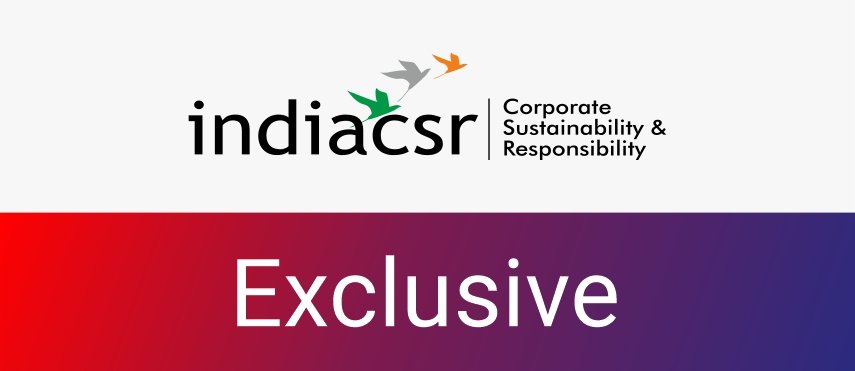Wireless communication has revolutionized the way we communicate, access information, and interact with the world. From the first generation (1G) of analog cellular networks in the 1980s to the fifth generation (5G) of digital mobile broadband networks in the 2020s, each generation has brought significant improvements in speed, capacity, latency, and reliability.
However, as the demand for wireless services continues to grow exponentially, the limitations of 5G are becoming apparent. To meet the future challenges and opportunities of wireless communication, the research and development of the sixth generation (6G) of wireless networks has begun. 6G is expected to be the successor to 5G and provide substantially higher performance and new capabilities beyond the current mobile use scenarios.
In this article, we will explore what is 6G, how it works, what are its key benefits and challenges, what is India’s vision for 6G, and who are the key players in the 6G landscape.
🤔📶🔄6️⃣📡🚀
What is 6G?
6G is the designation for a future technical standard of a sixth-generation technology for wireless communication. It is still in the early stages of development and no universally-accepted standards exist that specify the components of the technology. However, systems are expected to be deployed by 2028. 6G aims to build on top of 5G and optimize its use cases as well as enable new ones.
Some of the potential features and goals of 6G are:
- Achieving terabit-per-second (Tbps) peak data rates and sub-millisecond latency
- Supporting massive connectivity of devices and sensors for the Internet of Things (IoT) and industrial automation
- Enabling ubiquitous and instant communication across physical, digital, and human domains
- Leveraging artificial intelligence (AI) and machine learning (ML) for network design, optimization, and operation
- Enhancing security, privacy, and trustworthiness of wireless communication
- Reducing energy consumption and environmental impact of wireless communication
- Supporting social and economic development and digital inclusion
🤔📶🔄6️⃣📡🚀
How does 6G work?
6G will rely on a combination of novel technologies and architectures to achieve its ambitious objectives. Some of the key technologies that are being explored for 6G are:
Terahertz (THz) spectrum
Frequencies from 100 GHz to 3 THz are promising bands for 6G as they offer wide bandwidths and high spatial resolution. However, they also pose challenges such as high propagation loss, molecular absorption, hardware complexity, and health effects.
Optical wireless communication (OWC)
OWC uses light waves to transmit information wirelessly. It can offer high data rates, low latency, low interference, and high security. However, it also faces challenges such as atmospheric attenuation, alignment, and mobility.
Non-terrestrial networks (NTNs)
NTNs consist of aerial platforms such as satellites, drones, balloons, or airships that provide wireless coverage from above. They can complement terrestrial networks and extend connectivity to remote areas. However, they also require coordination, integration, and regulation.
Reconfigurable intelligent surfaces (RISs)
RISs are passive or active devices that can manipulate electromagnetic waves by changing their reflection or refraction properties. They can enhance signal quality, coverage, and efficiency. However, they also need accurate channel estimation, synchronization, and control.
Cell-free massive MIMO
Cell-free massive MIMO is a network architecture that distributes a large number of antennas over a wide area without defining cell boundaries. It can improve spectral efficiency, reliability, and scalability. However, it also requires high computational power, backhaul capacity, and coordination.
Blockchain
Blockchain is a distributed ledger technology that enables secure and transparent transactions among multiple parties without a central authority. It can improve the trustworthiness, privacy, and security of wireless communication. However, it also consumes high energy, bandwidth, and storage.
🤔📶🔄6️⃣📡🚀
What are the key benefits of 6G?
6G will have multiple benefits for both the users and the society at large. Some of the benefits are:
It will enable ultra-fast and ultra-reliable wireless communication that can support immersive applications such as holographic telepresence, virtual reality (VR), augmented reality (AR), cloud gaming, etc.
It will enable massive connectivity of devices and sensors that can support smart applications such as smart cities, smart homes, smart health care, smart agriculture etc.
It will enable ubiquitous and instant communication across physical, digital, and human domains that can support seamless integration of cyberspace, physical space, and human society.
It will leverage AI/ML for network design, optimization, and operation that can support intelligent applications such as autonomous vehicles, smart factories, smart grids etc.
It will enhance security, privacy, and trustworthiness of wireless communication that can support secure applications such as digital identity, digital currency, digital governance etc.
It will reduce energy consumption and environmental impact of wireless communication that can support sustainable applications such as green energy, green transportation, green manufacturing etc.
It will support social and economic development and digital inclusion that can improve the quality of life, productivity, and well-being of people.
🤔📶🔄6️⃣📡🚀
What are the key challenges of 6G?
6G is a novel and ambitious initiative that faces several challenges in its development and deployment. Some of the challenges are23:
It requires a robust and reliable system of measurement, reporting, and verification (MRV) of the performance and impact of 6G technologies and applications. This involves high costs, technical complexities, and data uncertainties.
It requires a clear and consistent definition and classification of 6G features and goals. This involves trade-offs between technical feasibility, economic viability, and social desirability.
It requires a fair and transparent mechanism of setting the standards and regulations for 6G. This involves coordination, collaboration, and consensus among multiple stakeholders with diverse interests and perspectives.
It requires a strong and effective governance structure and ethical framework for 6G. This involves addressing the legal, social, and ethical implications and risks of 6G such as human rights, privacy, security, safety, accountability etc.
It requires a high level of awareness, participation, and trust among the users and the society at large. This involves communication, education, and engagement strategies to foster the adoption and acceptance of 6G.
🤔📶🔄6️⃣📡🚀
What is India’s vision for 6G?
India has shown interest and commitment to participate in the global 6G research and development. The Department of Telecommunications (DoT) has set up a high-level committee to develop a roadmap for 6G in India. The committee consists of representatives from academia, industry, government, and civil society.
The committee will identify the key focus areas, challenges, opportunities, and strategies for 6G in India. Some of the potential focus areas for India are:
Developing indigenous 6G technologies and solutions that cater to the specific needs and challenges of India such as rural connectivity, digital literacy, digital inclusion, etc.
Leveraging 6G for social good and sustainable development that align with India’s national priorities such as health care, education, agriculture, energy, etc.
Fostering innovation and entrepreneurship in 6G that create new opportunities for economic growth, employment, and competitiveness in India.
Building capacity and capability in 6G that enhance the skills, knowledge, and infrastructure of India’s human resources, institutions, and industries.
Collaborating with global partners in 6G that enable knowledge sharing, technology transfer, standardization, regulation, and cooperation in 6G.
🤔📶🔄6️⃣📡🚀
Who are the key players in 6G?
The 6G landscape is composed of various players from different sectors and regions that have shown interest and involvement in 6G research and development. Some of the key players are:
Academia 🏛
Several universities and research institutes around the world have initiated or joined 6G research projects or programs. Some examples are: University of Oulu (Finland), Aalto University (Finland), University of Surrey (UK), King’s College London (UK), New York University (USA), University of California Berkeley (USA), Beijing University of Posts and Telecommunications (China), Shanghai Jiao Tong University (China), Indian Institute of Technology Madras (India), Indian Institute of Technology Delhi (India), etc.
Industry 🏭
Several companies from various sectors such as telecommunications, electronics, software, etc. have invested or participated in 6G research and development. Some examples are: Nokia (Finland), Ericsson (Sweden), Samsung (South Korea), Huawei (China), ZTE (China), Apple (USA), Google (USA), Microsoft (USA), Intel (USA), Qualcomm (USA), Reliance Jio (India), Bharti Airtel (India), Vodafone Idea (India), etc.
Government ⚖️
Several governments from different countries have supported or launched 6G initiatives or policies. Some examples are: European Commission (EU), Federal Communications Commission (USA), National Science Foundation (USA), Ministry of Industry and Information Technology (China), Ministry of Science and Technology (China), Ministry of Internal Affairs and Communications (Japan), Ministry of Science and ICT (South Korea), Ministry of Communications and Information Technology (India), Department of Telecommunications (India), etc.
(Copyright @ India CSR)




























